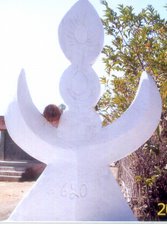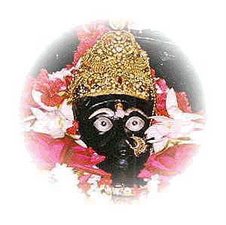Hindutva's production of culture and nation is often marked by savagery. On 23 August 2008, Lakshmanananda Saraswati, Orissa's Hindu nationalist icon, was murdered with four disciples in Jalespeta in Kandhamal district. State authorities alleged the attackers to be Maoists (and a group has subsequently claimed the murder). But the Sangh Parviar held the Christian community responsible, even though there is no evidence or history to suggest the armed mobilisation of Christian groups in Orissa.
After the murder, the All India Christian Council stated: “The Christian community in India abhors violence, condemns all acts of terrorism, and opposes groups of people taking the law into their own hands”. Gouri Prasad Rath, General Secretary, VHPOrissa, stated: “Christians have killed Swamiji. We will give a befitting reply. We would be forced to opt for violent protests if action is not taken against the killers”.
Following which, violence engulfed the district. Churches and Christian houses razed to the ground, frightened Christians hiding in the jungles or in relief camps. Officials record the death toll at 13, local leaders at 20, while the Asian Centre for Human Rights noted 50.
The Sangh’s history in postcolonial Orissa is long and violent. Virulent Hindutva campaigns against minority groups reverberated in Rourkela in 1964, Cuttack in 1968 and 1992, Bhadrak in 1986 and 1991, Soro in 1991. The Kandhamal riots were not unforeseen.
Since 2000, the Sangh has been strengthened by the Bharatiya Janata Party's coalition government with the Biju Janata Dal. In October 2002, a Shiv Sena unit in Balasore district declared the formation of the first Hindu ‘suicide squad’. In March 2006, Rath stated that the “VHP believes that the security measures initiated by the Government [for protection of Hindus] are not adequate and hence Hindu society has taken the responsibility for it.”
The VHP has 1,25,000 primary workers in Orissa. The RSS operates 6,000 shakhas with a 1,50,000 plus cadre. The Bajrang Dal has 50,000 activists working in 200 akharas. BJP workers number above 4,50,000. BJP Mohila Morcha, Durga Vahini (7,000 outfits in 117 sites), and Rashtriya Sevika Samiti (80 centres) are three major Sangh women's organisations. BJP Yuva Morcha, Youth Wing, Adivasi Morcha and Mohila Morcha have a prominent base. Bharatiya Mazdoor Sangh manages 171 trade unions with a cadre of 1,82,000. The 30,000-strong Bharatiya Kisan Sangh functions in 100 blocks. The Sangh also operates various trusts and branches of national and international institutions to aid fundraising, including Friends of Tribal Society, Samarpan Charitable Trust, Sookruti, Yasodha Sadan, and Odisha International Centre. Sectarian development and education are carried out by Ekal Vidyalayas, Vanavasi Kalyan Ashrams/Parishads (VKAs), Vivekananda Kendras, Shiksha Vikas Samitis and Sewa Bharatis — cementing the brickwork for hate and civil polarisation.
Full Story







No comments:
Post a Comment